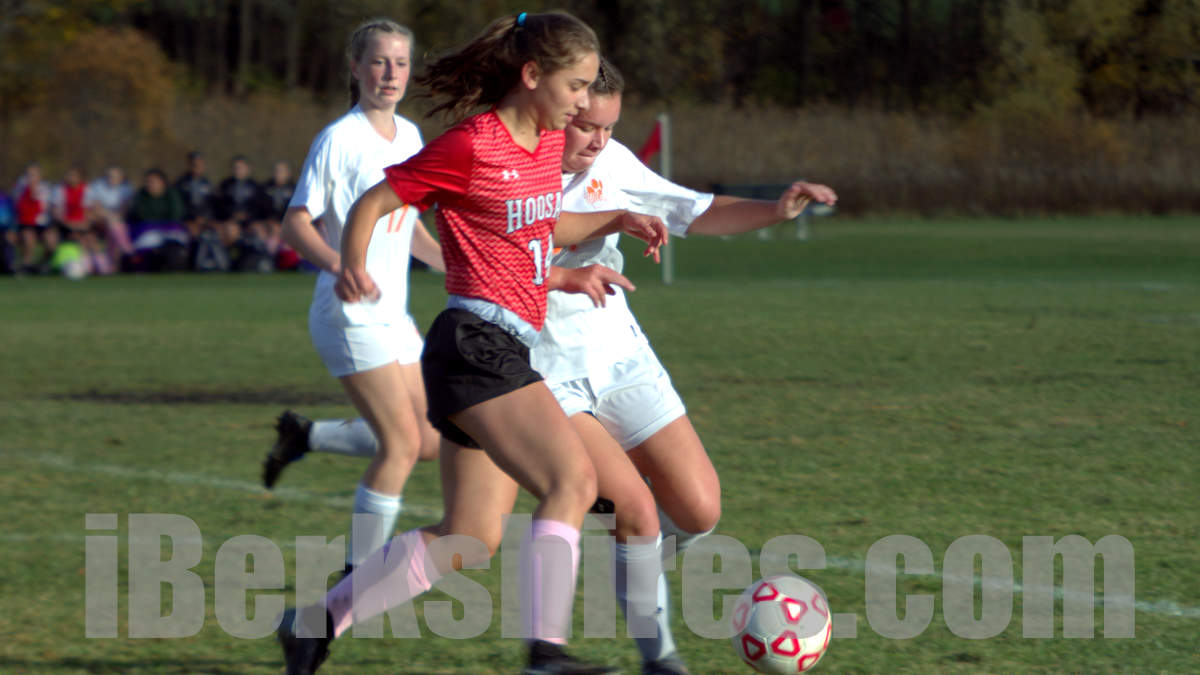State Outlines Modifications Needed to Make Fall Sports Happen
 BOSTON -- High school football, soccer and volleyball would need to undergo modifications to be played in the commonwealth this fall under the latest guidelines for youth sports released Thursday by the Executive Office of Energy and Environmental Affairs.
BOSTON -- High school football, soccer and volleyball would need to undergo modifications to be played in the commonwealth this fall under the latest guidelines for youth sports released Thursday by the Executive Office of Energy and Environmental Affairs.
Football continues to fall in the EEA's "Higher Risk" category for transmission of COVID-19, and that means tackle football would not be allowed under the rules released Thursday. Soccer and volleyball are classified in the "Moderate Risk" category and would require changes of their own to reduce the risk of transmission.
All activities but "Lower Risk" sports, like golf and cross country running, will require some modifications in order to have competitive games between teams, according to the EEA document.
The Department of Elementary and Secondary Education is expected to use the EEA guidance to set the ground rules for interscholastic sports in the commonwealth this fall.
The Massachusetts Interscholastic Athletic Association Board of Directors last month committed to follow the direction of DESE and the EEA in making decisions about the interscholastic competitions.
According to the EEA, Higher Risk sports are those that have "a requirement or a substantial likelihood of routine close and/or sustained proximity or deliberate contact."
In addition to fall sports, like football, the Higher Risk group includes wrestling, rugby, basketball, lacrosse, ice hockey, competitive cheerleading, martial arts, ultimate Frisbee, boxing and pairs figure skating.
Moderate Risk sports involve "intermittent close proximity or limited, incidental physical contact between participants." Those sports include baseball, softball, crew, sailing, track and field, team swimming, dance class, fencing, field hockey and girls lacrosse in addition to soccer and volleyball.
Lower risk sports are mostly individual sports like tennis, horseback riding and motor sports and require few modifications that might impact competition. But even those sports require physical distancing, which likely will mean a ban on "mass starts" for cross country runners this fall.
As for the modifications for Moderate Risks and Higher Risk sports, they EEA document released Wednesday morning indicates those athletes will see some major changes.
Those moderate and high risk sports can conduct individual workouts or socially distanced group activities, like non-contact drills, without modification. But to get beyond what EEA calls "Level 1" activity and conduct competitions (i.e., inter-team games), the moderate and high risk sports will be required to implement mandatory modifications.
"Modifications should strive to keep participants 6 feet apart for the majority of play and must eliminate all deliberate contact," the EEA guidance reads.
The "deliberate contact" that must be eliminated includes collisions, tackling and blocking.
Sport organizers also must minimize "intermittent contact," which includes "faceoffs, throw-ins, scrums for the ball/puck or similar activities," the guidance reads.
In addition, the EEA mandates that "Facility Operators and Activity Organizers must require facial coverings be worn by all participants" with the following three exceptions: high intensity aerobic or anerobic activities or water sports; when distancing of 6 feet or more is possible between participants; or individuals who are unable to wear a face covering due to a medical condition or disability.
The EEA specifically says that soccer players wear face coverings during play and explains how that could be accomplished.
"For example, soccer players should have facial coverings with them at all times, and where possible play with the facial covering on, removing it for long runs down the field, for plays without close contact, and in the goal," the guidance reads.
Last month, the MIAA Board of Directors committed to following DESE and EEA guidelines in formulating a plan for the fall season.
On Thursday morning, the MIAA released a statement saying it was looking forward to the DESE guidelines that will accompany Thursday morning's release from the EEA.
The state governing body has a couple of different models from other states it could follow to help modify its fall sports to align with the EEA guidelines.
Neighboring Vermont has announced that its fall football season will be 7-on-7 touch and it will hold volleyball matches outside. States like North Carolina have moved high school football to the spring, a step also getting serious consideration in Connecticut, according to a report this week in the Hartford Courant.
